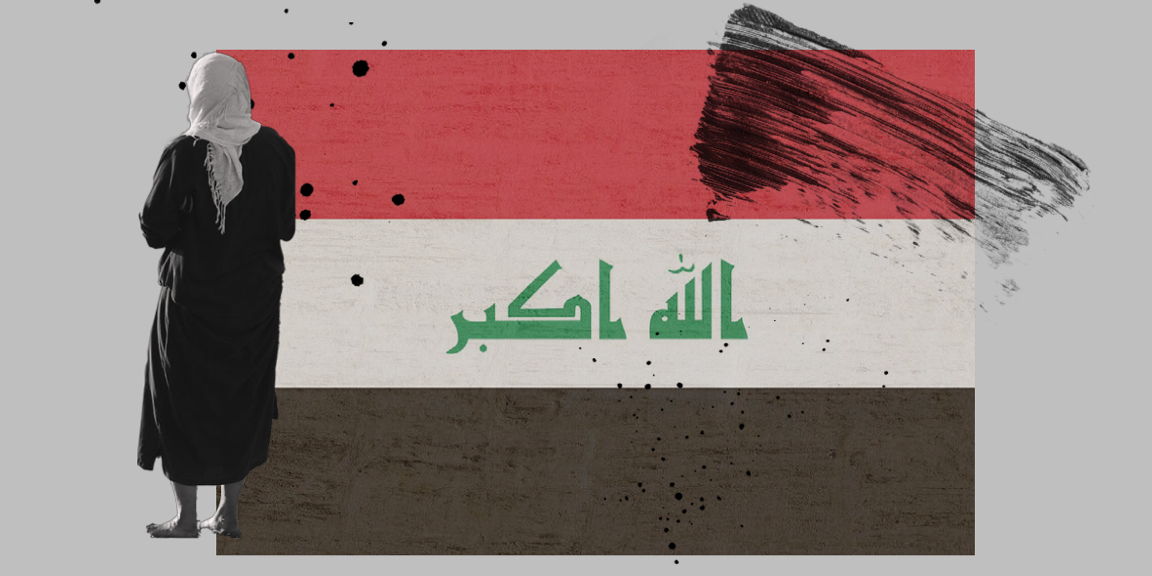The Invisible Women of Iraq

- Oops!Something went wrong.Please try again later.
Since 2003, ISIL (also known as ISIS or Daesh) has killed an estimated 30,000 civilians, injured 55,000 and displaced 3 million others. Minority groups were specifically targeted by the terror group, including Yazidis, Christians, Sabean-Mandeans, Turkmen, Kaka’i, and Shabaks. Decried as devil-worshippers, Yazidis were abducted and made into child soldiers and sex slaves. The United Nations has described Iraq’s humanitarian crisis as “one of the world’s worst.”
This campaign was genocide, and the Iraqi parliament has officially recognized it as such in the recently adopted Yazidi Survivors Bill. Aimed at remedying ISIL’s atrocities and providing reparations for survivors, the bill has been celebrated by human rights leaders and advocates as a revolutionary piece of legislation. There is no doubt it is.
Today's passage of Iraq’s Yazidi Survivors Bill is an important first step in acknowledging the gender-based trauma of sexual violence & need for tangible redress. Implementation of the law will need to be focused comprehensively supporting & sustainably reintegrating survivors.
— Nadia Murad (@NadiaMuradBasee) March 1, 2021
Despite the groundbreaking nature of the new law, survivors’ trauma is far from resolved. After escaping certain death, victims now must grapple with what the eye can’t see nor the mind quantify — the loss of self.
A fate worse than death.
Speaking about his story to Jiyan Foundation For Human Rights, the organization I volunteer for that is at the forefront of reparations efforts, Childar, 26, recounts his chilling experience at the hands of ISIL. Chidar and his brothers were captured in 2015 and made into child soldiers. He was regularly tortured by his ISIL captors. “I did not know until it happened that torture could be worse than death,” he said. “They did unimaginably cruel things [to me].”
Seran, 23, also bravely recounted her experience to Jiyan Foundation. Her story is not unlike thousands of other Yazidi girls who were captured and made into sex slaves for ISIL fighters and is eerily similar to the story of Nobel Peace Prize Laureate and ISIL survivor, Nadia Murad, as she recounted in her memoir The Last Girl: My Story of Captivity and My Fight Against the Islamic State. “In the beginning he did not touch me,” Seran said. “But later he attacked me and I was very scared. I cried a lot.”
One night, by a stroke of luck, Seran found a mobile phone and used it to coordinate an escape with the help of her captor’s sympathetic wife. When she finally saw her family, she “felt as if [she] had been born again.” But despite her heroic escape and reunification with her loved ones, she still suffers “a lot of pain,” a lifetime of pain, because of what she endured.
The aftermath.
According to a study done by BMC Medicine, more than 80 percent of women and girls interviewed met the criteria for a probable PTSD diagnosis. Victims of ISIL were forced to reject their religion, flee their homeland, and watch their loved ones die in front of them. After suffering months or even years of physical and psychological abuse, it is no wonder that survivors face severe depression and struggle with their sense of identity they once held dear.
Though it is true ISIL targeted men and women, it is women who still continue to bear the brunt of ISIL’s violence. Many women continue to face abuse in the home directly due to the stress and shame they are thought to bring upon their husbands. Ewrin, 41, told Jiyan Foundation of her experience. “My husband thinks I will bring shame on the family if he does not control my every move. He beats me for the tiniest things,” she said. Compounded by the COVID-19 pandemic, which has seen a rise in domestic violence, women survivors find themselves in a prolonged state of vulnerability.
Many survivors also remain displaced in refugee camps or temporary housing without livelihoods or a sense of purpose. Since 2014, the Kurdistan region of Iraq has hosted more than 1.5 million internally displaced people, not including over 250,000 Syrian refugees. Many have died by suicide in the camps, while many formerly enslaved women and children struggle to come home.
The same BMC Medicine study reported that formerly enslaved women and girls perceived themselves to be rejected in their community due to being enslaved. They’re not imagining it. Speaking to Al Jazeera, the deputy of senior Yazidi leader Prince Hazem, Jawhar Ali Beg, was quoted as rejecting the idea of integrating children of Yazidi mothers and ISIL fathers back into the community. The mothers of these children are also summarily rejected. So where can the victims turn?
The path ahead.
Even though the bill contemplates material support, such as providing survivors with plots of land, pensions and access to mental health clinics, repairing the identity of a nation cannot be accomplished only by legislation. The civil society sector has recognized this fact and is stepping up to fill the gaps.
Various charitable organizations have set up mental health clinics, social groups, and art programs for survivors. Though incremental, the establishment of these programs in the country emphasizes the importance of addressing survivors’ mental health and well-being, a subject not often embraced in the region.
Given the recent passage of the bill, it is yet to be seen if survivors will be remedied for the atrocities they suffered. However, with the tenacity of the civil society sector and growing awareness of the plight of Yazidis in Iraq, the future does hold hope, and with hope comes rebirth.
You Might Also Like

